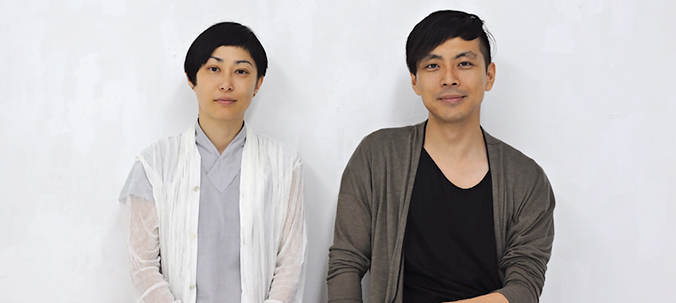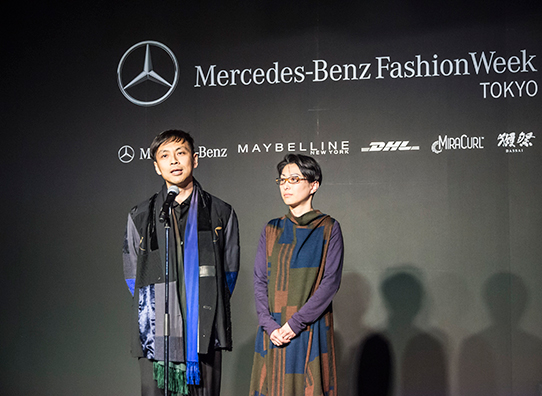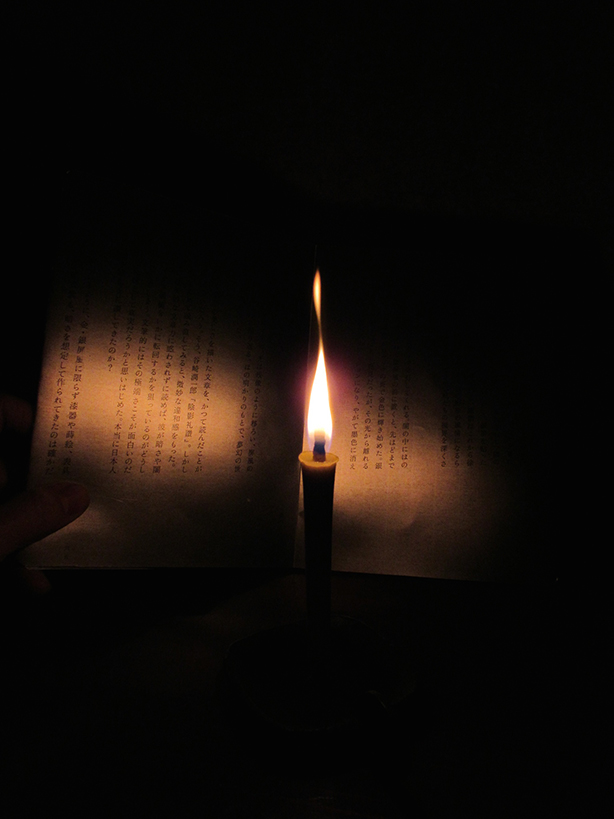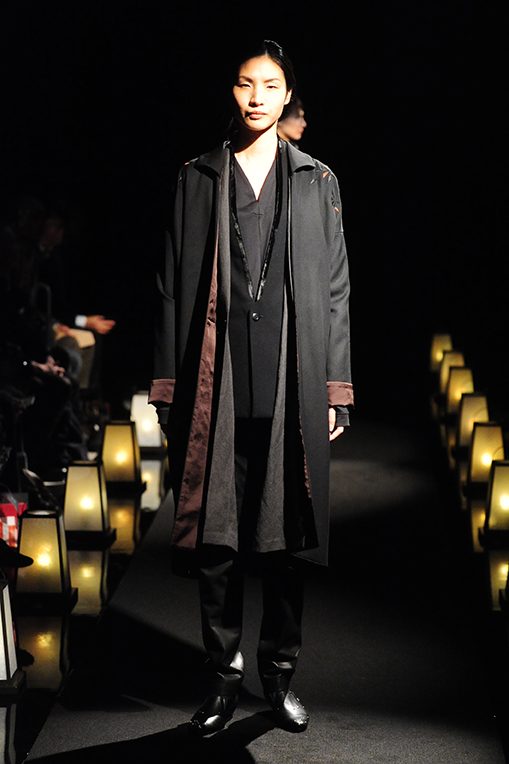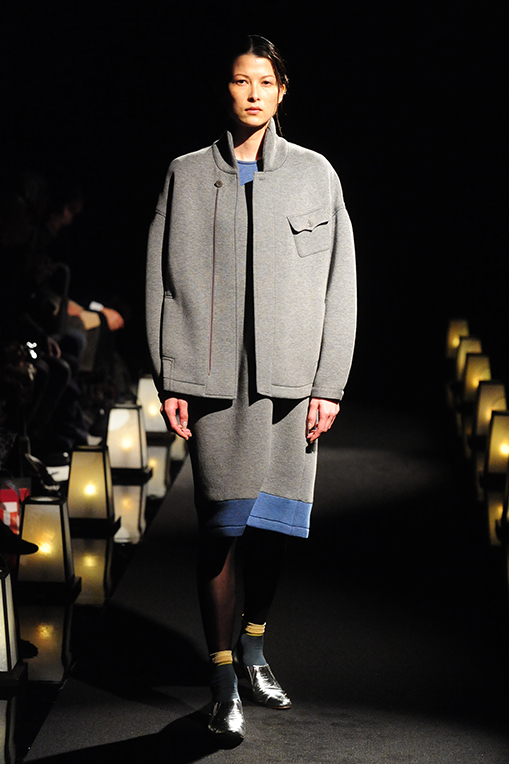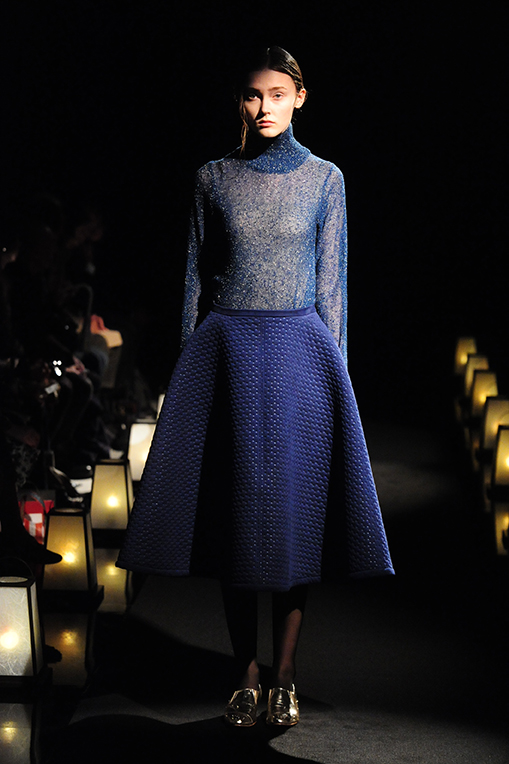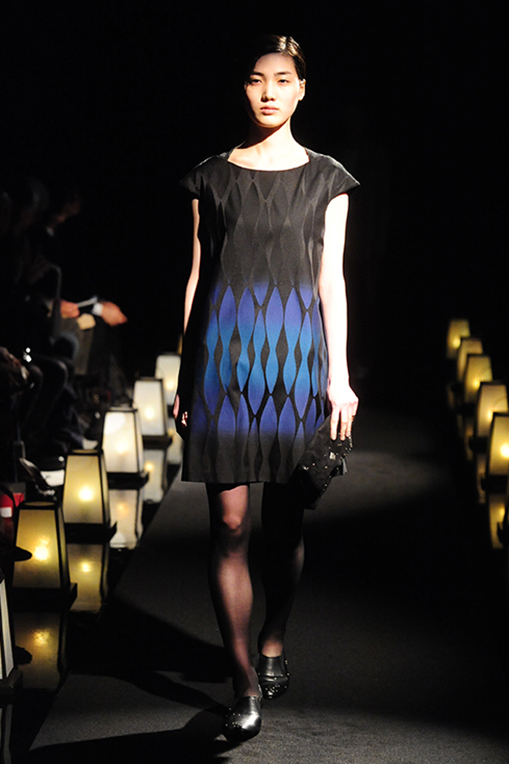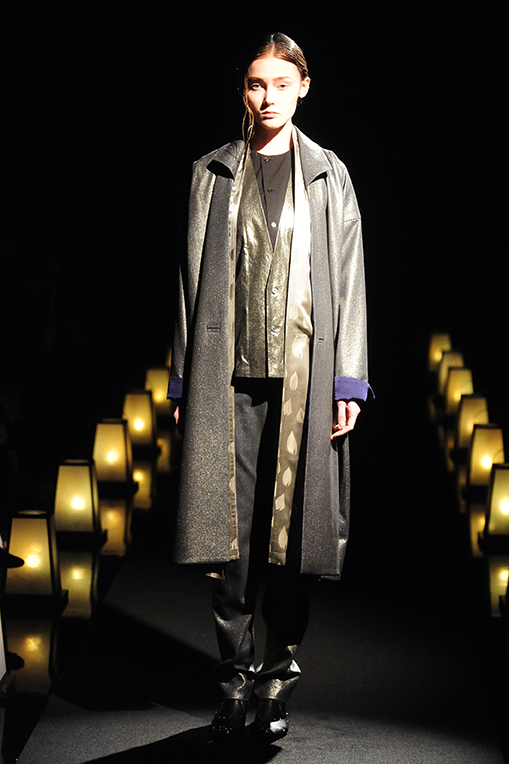Hiroyuki Horihata , Makiko Sekiguchi / “matohu” designer
MBFWT 2015-16 A/W Mercedes-Benz Presents designer
Hiroyuki Horihata, after finishing Graduate School at the Doshisha University, and Makiko Sekiguchi, after graduating from the Kyorin University, both took the Men's Design course offered under the Apparel Design program in the Bunka Fashion College.
1998 After graduating, both worked for 5 years as pattern makers at COMME des GARCONS and Yohji Yamamoto respectively.
2003 Both resigned and moved to UK and started working for London designer Bora Aksu's 04-05 A/W collection.
2005 They launched matohu and started participating in JFW from 2006.
2009 They received the Mainichi Fashion Grand Prix New Designer Award and the Shiseido Sponsorship Award.
[ URL ] http://www.matohu.com/
matohu, the brand that announced its collection at Mercedes-Benz Fashion Week TOKYO 2015-16 A/W held the other day as the “Mercedes-Benz Presents” designer. We sat down with matohu, with their eyes turned towards Japanese aesthetics and culture cultivated over a long period of history and who continue to propose new values from a modern point of view, to talk about what went on behind-the-scenes at the show held the other day and their current state of mind celebrating 10 years since the brand was founded.
This time you announced your collection as the “MBFWT Presents” designer. Were there any differences when compared to a traditional show?
Horihata:First of all, we were truly happy to have been evaluated as a brand. At the same time, we renewed our commitment to giving off a good show as the collection representing Fashion Week. As for the venue, we were presented with two different choices: Shibuya Hikarie and the Mercedes-Benz Connection in Roppongi. With the collection theme decided upon as “Honoka (Subtle) ,” we opted for the latter in hopes of representing a night situation.
Sekiguchi:Each time, we begin thinking about the configuration of a show from around the time we decide upon textiles. For this show as well, we conveyed the theme to Mr. Hiromasa Tsujii (atom inc.), who was in charge of direction, about two to three months prior to the show, and talked about how we wanted to show things off. One of the other reasons we chose Mercedes-Benz Connection was because we wanted the gallery to be as close to the runway as possible to show off the collection, in order to have it embody the theme.
Horihata:With the venue being close to a trapezoidal shape, rather than show the models make a round-trip on a linear runway, we imagined a scene of people walking slowly in a single direction over old cobbled streets illuminated in a dim light. I feel that we were able to represent a nice contrast with the glistening city of Roppongi, which can be said to be a night-less entertainment district, as if entering into another world.
Sekiguchi:Due to the capacity of the venue this time around, we decided to hold the show twice, once for press and buyers and once for customers and related parties. I was worried that the model’s motivation would drop for the second show, but the models went out with the consciousness of trying to fix things that they weren’t content with based on the first show, and seemed to enjoy the show in a relaxed atmosphere being able to directly hear the reactions of the customers.
Please tell us about how you came up with the theme for the collection of “Honoka.”
Horihata:A large inspiration for the idea came when visiting the workshop of Mr. Inuki Tachihara, a printmaker in Kyoto, and seeing the silver folding screen there. I saw the silver folding screen surrounded in darkness and illuminated only by the subtle flames from the candle, which gave off a completely different image from that seen at a museum or other places. I was surprised that the screen appeared to be golden due to the candle light. Moreover, not only did the screen look golden, but the reflection of the shining light due to the folding of the screen gave off the appearance of the moon.
Sekiguchi:Although we were fiddling around with the vague theme of “Light and Darkness” originally among ourselves, something always occurs which pops out to give us a supportive push. In the previous period in which we announced our collection under the theme of “The Beauty in the Keicho period”, we announced 10 seasons worth of themes in prior. However, regarding “The Japanese Eye” that we are continuing on, we are picking up ideas from various keywords and themes we have stocked, to meet the mood and fit the timing each season.
Horihata:This will be the 11th installment of the “The Japanese Eye” Series. The more we continue on with the series, the more we are able to realize the fun of traditional Japanese values. Although there are truly a never-ending amount of themes out there, we believe that the important thing is that that we are impressed with that experience ourselves. Japanese aesthetics have existed from a long time ago, but impressions exist within ourselves at the present time. In the end, that is what becomes our strongest motivation.
Sekiguchi:Something learned just from reading books is difficult to keep as an impression. There are almost no times in which we perform research on a daily basis. During the stage of delving into themes, although we do read relevant literature and may go places for our research, we believe that more than that it is important to notice things from within our daily lives. By conveying that to customers we hope to enrich their daily life little by little.
Horihata:For the theme this time, although we explored ways Japanese people have used subtle lighting to form a tight connection with surrounding objects, we don’t believe that this theme is specific to Japan. Day and night exist anywhere and everywhere in the world, and the poetic moment born from light and darkness is a universal theme. We thought of how to express that through clothing, and for ways to have our customers enjoy that in their lives.
What types of things did you focus on when actually bringing the theme of “Honoka(Subtle)” to clothing?
Sekiguchi:The things we paid the most attention to were the details; we checked colors and textures while applying subtle light to the darkened room. Specifically, while using materials and techniques that create shine, such as transparent nylon yarn, lame yarn, and hot stamping, we also incorporated materials which absorb the light, such as flannel wool. In this way we were conscious of representing a contrast between the light and darkness.
Horihata:It was some sort of a surprise that clothing could look this beautiful under the specific conditions of the subtle lighting. I think we were finally able to see what we were trying to accomplish when looking at the overall scene during the rehearsals of the show. In addition, when looking over the DVD video again after the show had been completed, it was interesting to see a completely different atmosphere from what we have seen at the venue. I realized that the clothing for this collection was truly complete in that moment when the poetic beauty can be felt due to the subtle lighting.
Sekiguchi:For example, we thought that it would be splendid if people could enjoy the moment in which surprising changes occur, such as an unexpected moment in which the color of the fabric appears different beneath the light of a candle at a restaurant or at home. Also, for the silhouette, since the small forms are hardly seen among the subtle lighting, we decided to design the clothing with a relaxed and spacious feel as a whole.
matohu has announced many collections thus far in Tokyo. What type of awareness do you face shows with?
Horihata:Each season, we explain the theme to be conveyed using text, and write it down on places such as the invitations before the show. As we convey the theme in this manner beforehand, we consider that the most important thing for the show is to be able to see and feel. We believe that one million words cannot win over a single moment of beauty, so we do our best so as to not have the words used to convey the theme differing with the show that expresses it. However, what we are trying to do with the show is a suggestion to enjoy such aesthetics together, and that essentially only accounts for about half of the things we want to convey. Nevertheless, we would like for people to go to shops and touch and feel the clothing directly after the show. Perhaps that is the style we have established after continuing shows for about ten years.
Sekiguchi:All of the staff involved in the matohu shows are very ambitious to continue with a new representation of a new theme. That is why, when meeting for planning the show, we are always thinking of ways to make a new representation with these members, while taking into view ways of conveying the message outside of the show as well.
Horihata:Speaking of this season, we decided to challenge something new for our music, and purposely decided to break the musical image of matohu established thus far by using music with a strong rhythm. We have always asked musician Masato Hatanaka for the music for the shows, and we initially imagined a quiet and emotional impression. However, under the theme of “Subtle,” our stylist Tetsuro Nagase made the proposal that if the music is matched too much when showing off the show under subtle lighting, it might not be that interesting. So, we purposefully decided to choose something contradictory, and made even more repeated exchanges with Mr. Hatanaka than usual.
The brand celebrated its 10th anniversary this year. Please tell us about the future outlook for the brand.
Sekiguchi:For the 10th anniversary commemoration event, we will be renting a tea house in the Nezu Museum for a “Kimono Tea Ceremony*” on the 5th and 6th of June. The plan started with the idea of wishing to provide those who have a long kimono an opportunity to wear it, but of course participation is welcomed by those who don’t own one as well.
Horihata:We will also be participating in and performing the tea ceremony, and also have plans to exhibit archives of past collections. In addition, for the future of the brand, we would like to establish our base for actively dispatching our brand concepts in Kyoto, also known as the treasury of Japanese beauty. For our overseas plans, we are currently in the stage of discussing a different approach than the norm of participating in Paris Fashion Week, etc. For the image, rather than expanding the matohu brand globally, we are wondering if we can’t do a more project specific expansion. Based on the concept of matohu of making things rooted in regional history and representing its value, we would like to make something that people from various countries and regions around the world are able to participate in.
Sekiguchi:Rather than simply viewing a video of a show on the Internet and buying clothes from an EC site, if we were able to enrich the quality of life by developing things that originate from the climate of that land and share that all over the world, that would truly be wonderful.
*A reservation for the “Long Kimono Tea Ceremony” is required. Please make inquiries to matohu Flagship Shop at Omotesando at 03-6805-1597.


